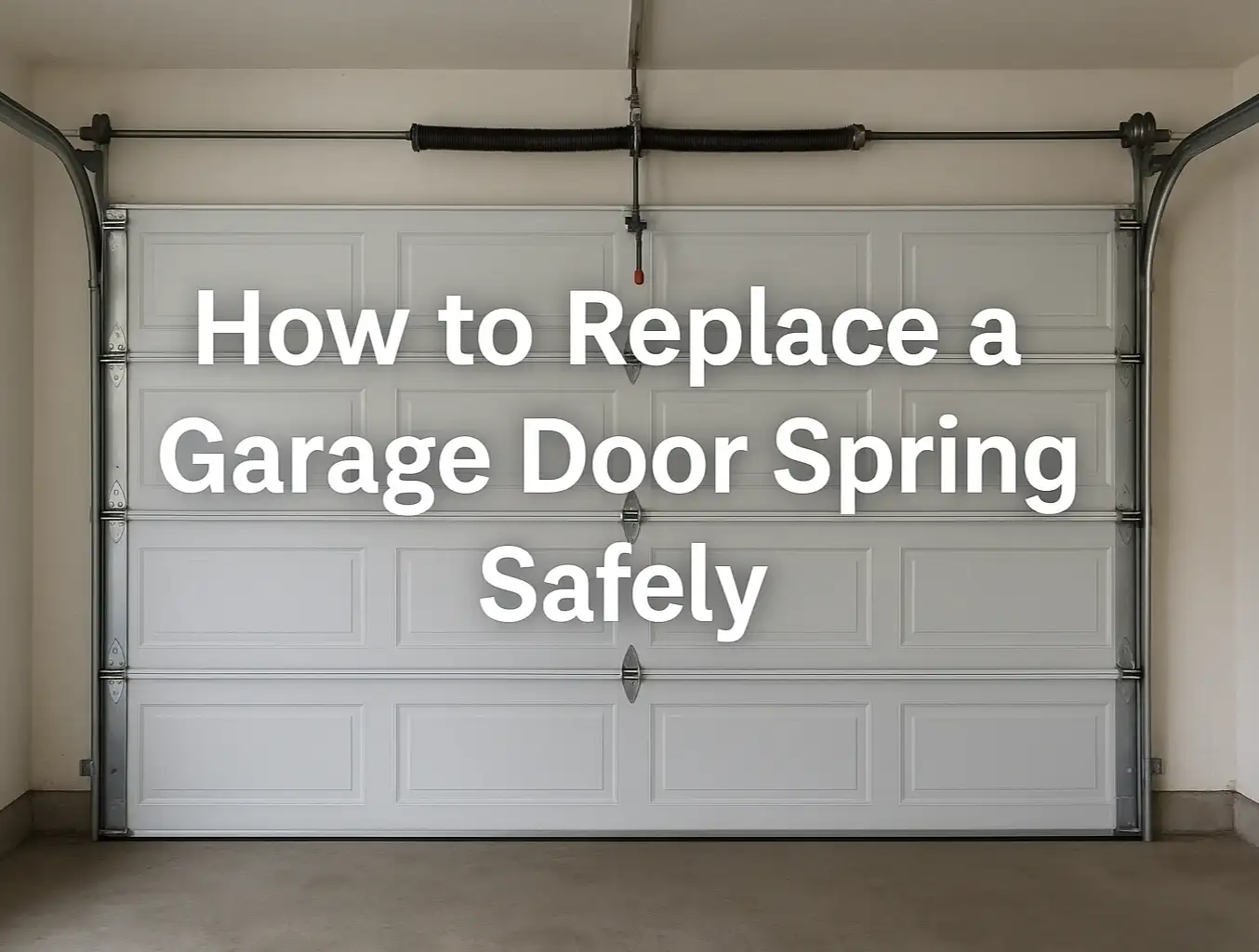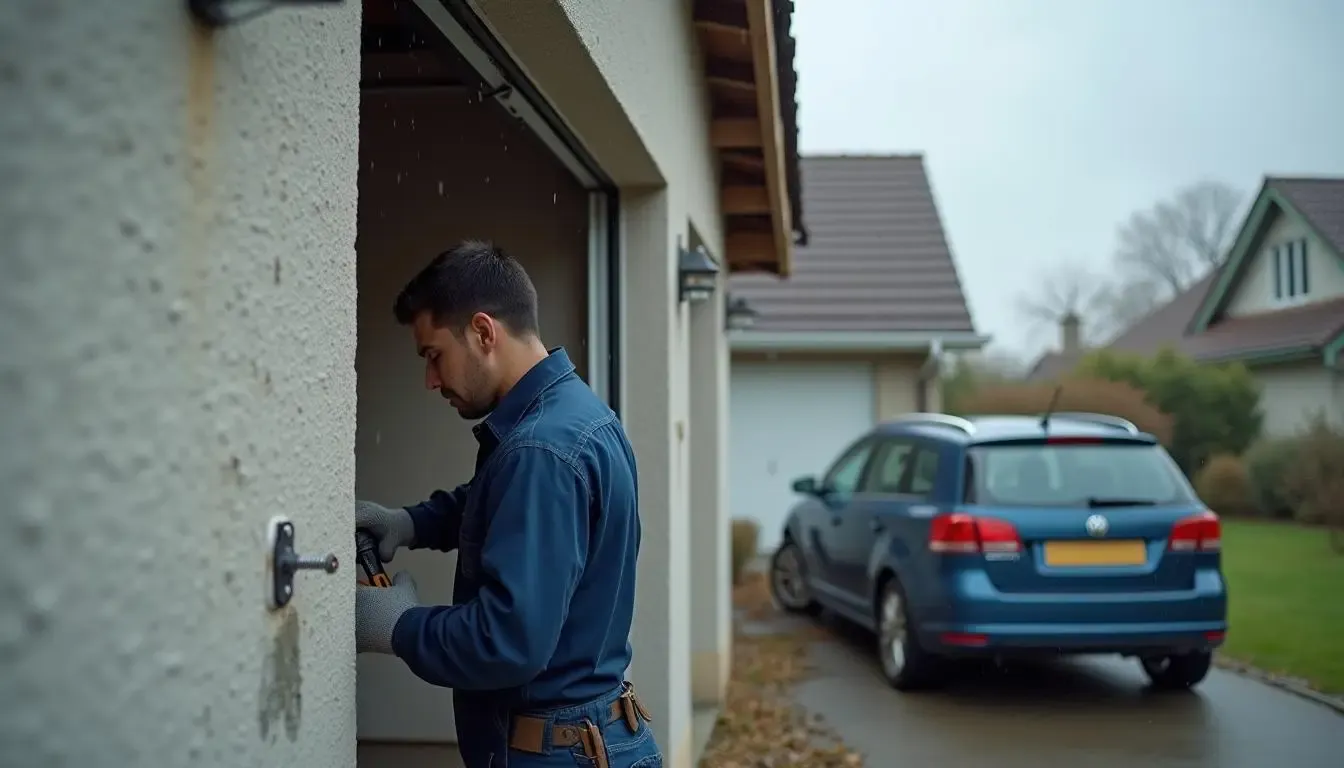How to Replace Garage Door Cables Without Getting Hurt
Published: Oct 15, 2025
Yesterday, your garage door worked fine, but today, your car’s stuck and the door won’t budge. If you’re searching for “how to replace garage door cables,” pause before you grab any tools. Garage door cable replacement isn’t a simple fix. Those cables anchor to bottom brackets and wrap around drums powered by high-tension springs. One slip can snap a cable, drop the door, or send hardware flying. Whether it’s a torsion-spring cable or an extension-spring safety cable, this repair belongs to trained technicians.
This guide from Up & Down Garage Doors outlines the real risks, warning signs to watch for, and why calling for professional repair is the safe move. Your safety comes first.
Never Attempt Garage Door Cable Replacement Yourself
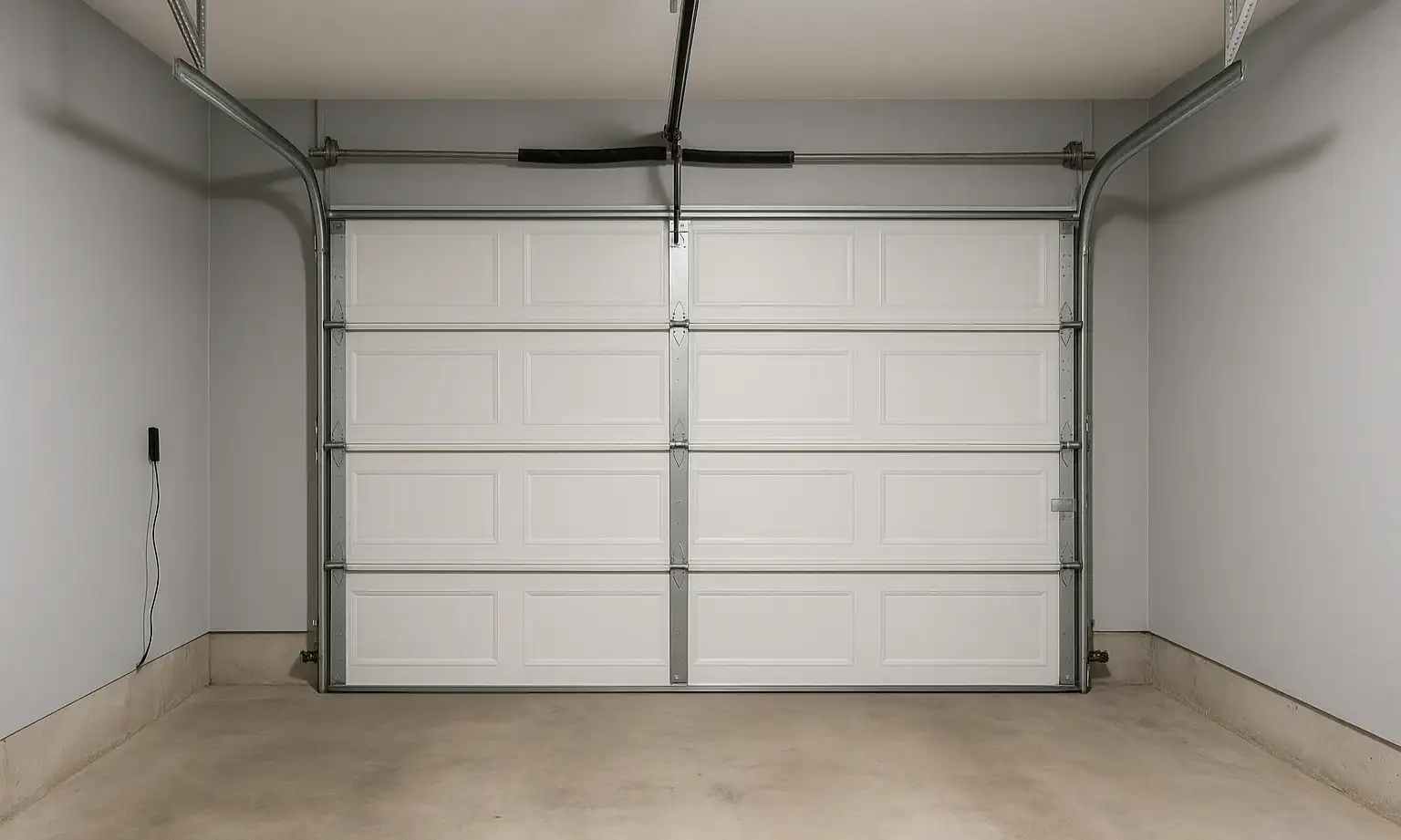
Garage door cables are thick steel wires that work with the springs to lift and lower the door’s weight, which can be hundreds of pounds. The springs — either a torsion spring mounted on the wall above the door or extension springs running along the overhead tracks — store enormous mechanical energy. Attempting a DIY garage door cable replacement without proper training and specialized tools is extremely hazardous.
Before any cable work, spring tension must be released in a controlled way. If it isn’t, that energy can unload suddenly — snapping a spring, slamming the door, or sending parts flying at high speed. The risk of deep cuts, broken bones, or major damage to your vehicle is real. Certified technicians use purpose-built winding bars and other tools to control that tension and replace a broken garage door cable safely. For more on the risks, see how to replace a garage door spring cable.

Signs You Need an Immediate Cable Replacement
A broken garage door cable compromises the entire system’s integrity and safety. If you notice any of the signs below, stop using the door immediately — manually or with the opener — and call a professional to schedule garage door repair. In this condition, the door may fall or slip off the tracks.
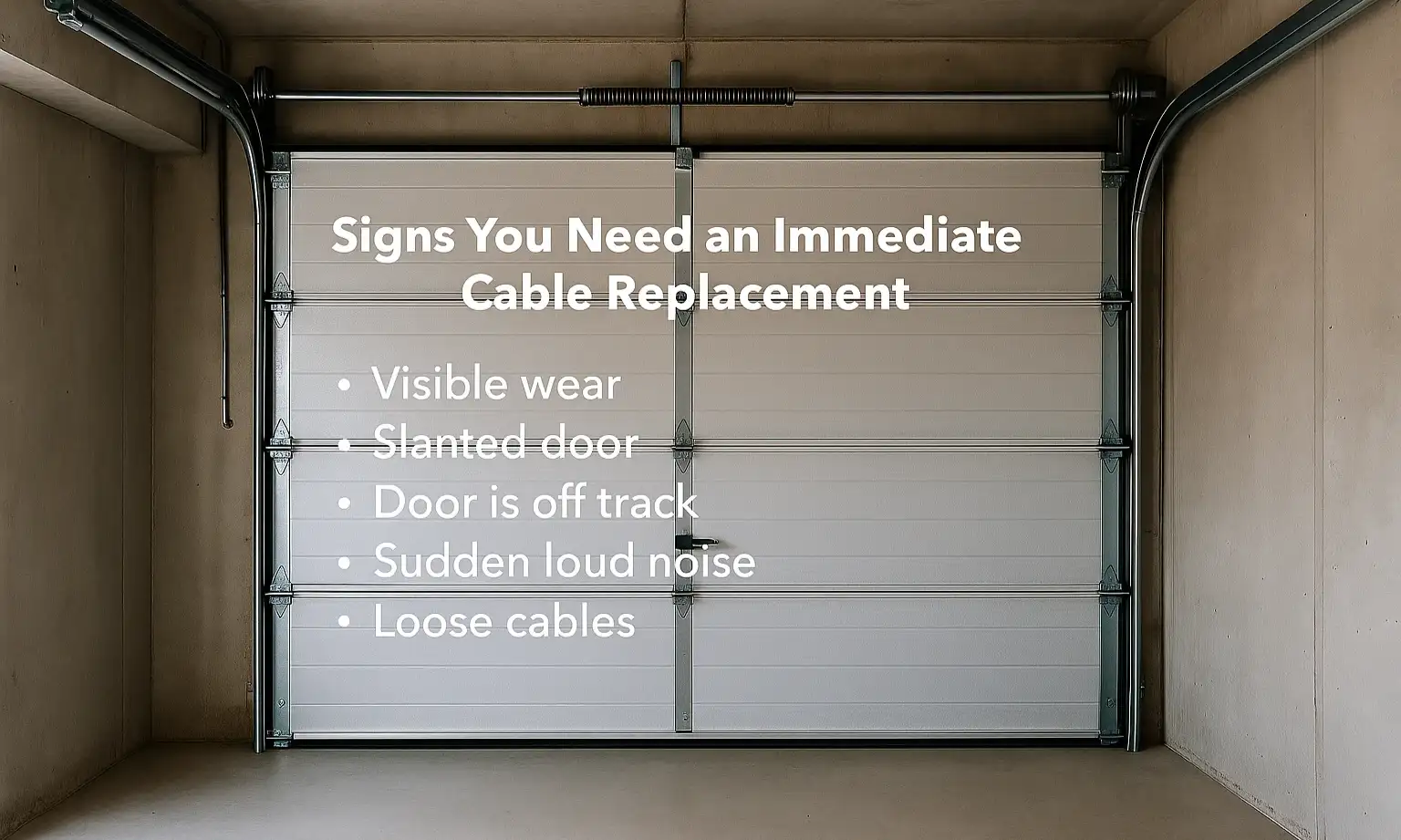
- Visible wear: Broken strands, fraying, or rust on one or both cables.
- Slanted door: The door looks uneven or crooked as it moves or when closed — often a sign that a cable has snapped or slipped.
- Door is off track: A loose or broken cable can let rollers pop out of the tracks, leaving you with a garage door off track.
- Sudden loud noise: A sharp bang from the garage often means a spring or cable has broken under tension.
- Loose cables: Cables look slack or are dangling near the bottom brackets.
Noticed any of these signs? Schedule a professional repair with Up & Down Garage Doors.

Why a Certified Technician Is the Safe Choice
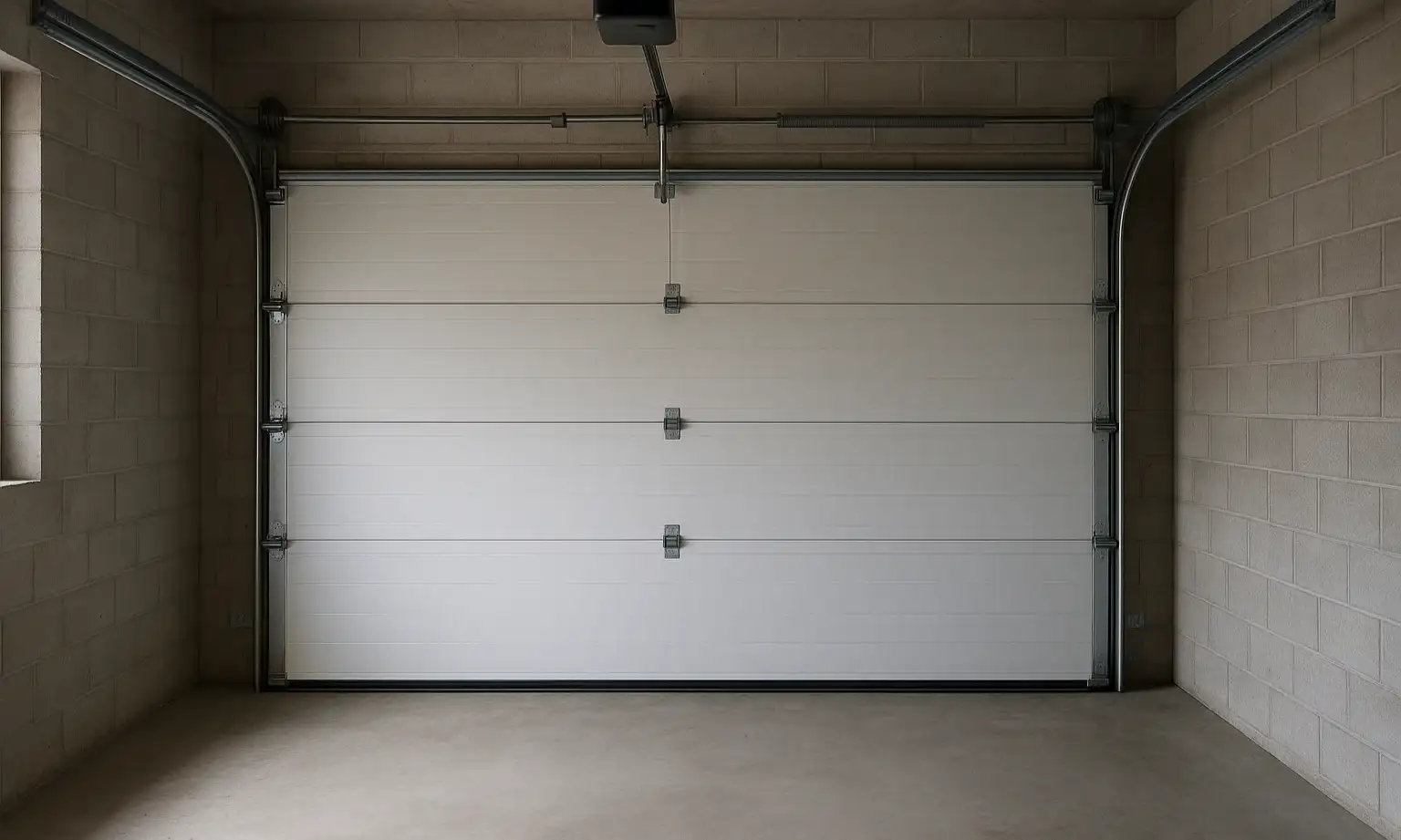
A professional repair makes sure the job is done safely and correctly, protecting you and your property. A certified technician controls high-tension parts and selects the right cable type, gauge, and length for your door’s weight and size—whether you have a torsion-spring cable or an extension-spring safety cable.
The professional process is deliberate: the tech secures the door, releases spring tension safely, and removes the old cables from the drums and bottom brackets. After installing new cables, the technician re-tensions the springs to set the balance, tightens the hardware, and tests safety features — including the auto-reverse setting and photo-eye sensors — to confirm they meet UL 325 standards.
It’s safer to let an expert do the work than to attempt it yourself. For a deeper look at the risks and steps involved, see our step-by-step guide to repairing garage door cables.

Summing Up
When it comes to the question of “how to replace garage door cables,” the most important step is knowing it isn’t a DIY job. High spring tension makes the work dangerous without the right tools and training. If you spot a broken or frayed garage door cable, unplug the opener, don’t force the door, and keep family and pets away from the doorway. Then call a certified technician. When timing matters, emergency garage door service from Up & Down Garage Doors gets you safe, reliable help fast. That way, your door works properly and your family stays safe.
Frequently Asked Questions: Garage Door Cable Replacement
What causes garage door cables to break?
Cables typically fail from wear and tear over thousands of cycles. Other common causes include rust from moisture, fraying from rubbing against other parts, and stress from an out-of-balance door. If you’re scheduling garage door cable replacement, ask for a balance check to prevent repeat failures.
Can I open my garage door if a cable is broken?
No. Do not use the opener or try to lift the door by hand. With one cable broken, the door is unstable and can fall suddenly, causing injury or damage. Unplug the opener and don’t force the door — call a certified technician.
How long do garage door cables last?
Garage door cables generally last 8 to 15 years, depending on factors like usage frequency, climate, and how well the door is maintained. Annual inspections help spot wear before a cable fails completely.
You may also like
